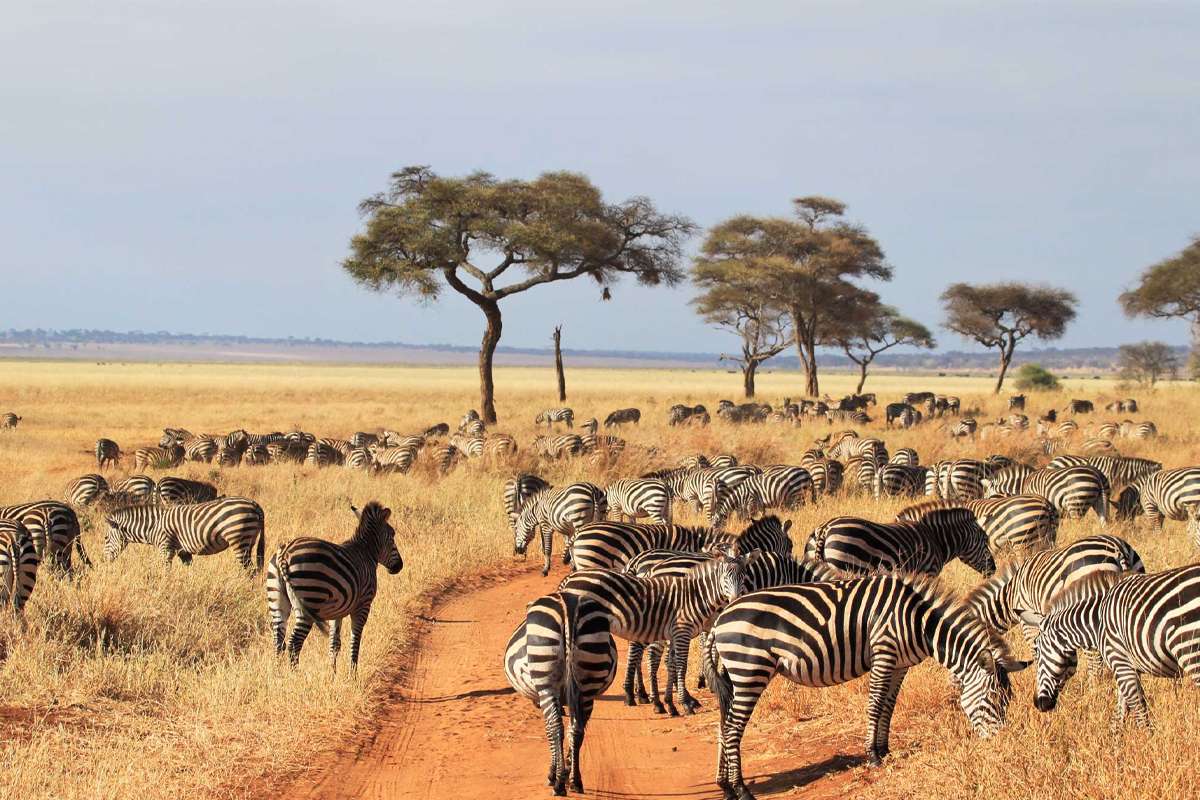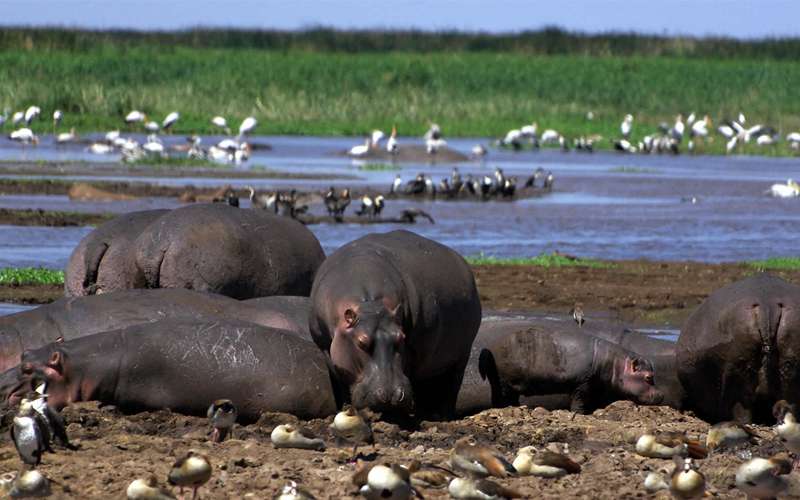Tanzania is a top destination for wildlife enthusiasts, boasting some of the most famous national parks and game reserves in the world. Each park offers a unique ecosystem and an array of animals, making Tanzania a premier spot for wildlife viewing. Here’s a guide to the best wildlife viewing spots in Tanzania.
Best Wildlife Viewing Spots in Tanzania
Serengeti National Park
- The epicenter of the Great Migration: The Serengeti is perhaps the most iconic wildlife sanctuary in the world, known for the annual Great Migration. This event sees millions of wildebeest, zebras, and gazelles traverse the plains in a circular migration pattern in search of fresh grazing and water.
- Year-Round Wildlife Viewing: Apart from the migration, the Serengeti offers superb year-round wildlife viewing. It is one of the best places to see predators in action, including lions, cheetahs, and leopards, especially around the central Seronera Valley.
Ngorongoro Conservation Area
- Unique Crater Setting: The Ngorongoro Crater, a UNESCO World Heritage site, is the world’s largest inactive volcanic caldera and serves as a natural enclosure for an incredible density of animals. This makes it one of the few places to see the Big Five (lion, leopard, rhinoceros, elephant, and buffalo) in one day.
- High Concentration of Wildlife: The crater floor offers excellent game viewing with virtually guaranteed sightings of lions, elephants, and rhinos. The lush forests and lake provide a scenic backdrop and are home to a diverse range of birds and smaller species like warthogs and hyenas.
Tarangire National Park
- Elephant Haven: Tarangire is famous for its large elephant herds. During the dry season, animals congregate along the Tarangire River, making it an excellent spot for viewing elephants, as well as giraffes, buffalos, and many other species.
- Birdwatching Paradise: With over 550 bird species, Tarangire is also a haven for birdwatchers. The park’s diverse habitats support an array of birdlife, including many dry-country species not found elsewhere in the northern safari circuit.
Selous Game Reserve
- Remote and Wild: Selous Game Reserve, now part of the larger Nyerere National Park, is one of the largest faunal reserves in the world. It’s known for its wild, untouched nature and a high density of game, including large populations of elephants, wild dogs, buffalos, and crocodiles.
- River Safaris: In addition to traditional game drives, Selous offers boat safaris on the Rufiji River, providing a unique perspective on wildlife behavior and the chance to see aquatic animals and birds up close.
Ruaha National Park
- Undisturbed Wilderness: Ruaha is known for its rugged beauty and a large pride of lions. It is less frequented by tourists, offering a more secluded safari experience. The park’s diverse landscapes, ranging from savannah to riverine forests, are home to a wide variety of animals.
- Cheetahs and Wild Dogs: Ruaha is one of the best places in East Africa to see cheetahs in the wild, as well as one of the strongholds for the endangered African wild dog.
Lake Manyara National Park
- Famous Tree-Climbing Lions: Lake Manyara is renowned for its unusual tree-climbing lions, a unique behavior not commonly observed elsewhere. The park’s lush groundwater forest offers a stark contrast to the more arid parks.
- Diverse Ecosystems: The varied ecosystems of Lake Manyara provide habitat for over 400 bird species, making it a fantastic location for birdwatching. The park also supports a large population of hippos and diverse mammalian species.
Gombe Stream National Park
- Chimpanzee Tracking: Gombe Stream is famous for Jane Goodall’s chimpanzee research. It’s an excellent place for guided walks to see chimpanzees and other primates. The park provides a rare chance to observe these fascinating animals in their natural habitat.
- Scenic Hiking Trails: Gombe Stream also offers beautiful hiking trails along the lakeshore and through the forests, providing spectacular views and additional wildlife viewing opportunities.
Tanzania’s wildlife viewing opportunities are unmatched. Each park offers a unique set of landscapes and wildlife, catering to all kinds of nature lovers and adventure seekers. Whether you are watching the great wildebeest migration in the Serengeti, observing tree-climbing lions in Lake Manyara or tracking chimpanzees in Gombe Stream, Tanzania provides unforgettable wildlife experiences.
FAQs
1. What is the best time to visit Tanzania for wildlife viewing?
The best wildlife viewing months in Tanzania are during the dry season from late June to October. The lack of water causes animals to congregate around predictable water resources.
2. Are there malaria risks while visiting these parks?
Yes, malaria is present in Tanzania. It is recommended to take malaria prophylaxis and use mosquito repellents and nets, especially during the rainy season.
3. Can I visit multiple parks in one trip?
Yes, many safari itineraries include visits to multiple parks. This can be arranged through safari operators who will handle all logistics, providing a comprehensive experience of Tanzania’s diverse wildlife.
4. Do I need a guide to visit these parks?
While it’s possible to self-drive in some parks, having a knowledgeable guide enhances the experience significantly. Guides can spot wildlife that is easy to miss and provide insights into animal behavior and the ecosystem.
For more information, please visit the following pages:





